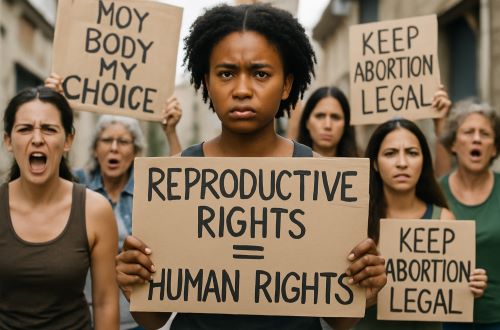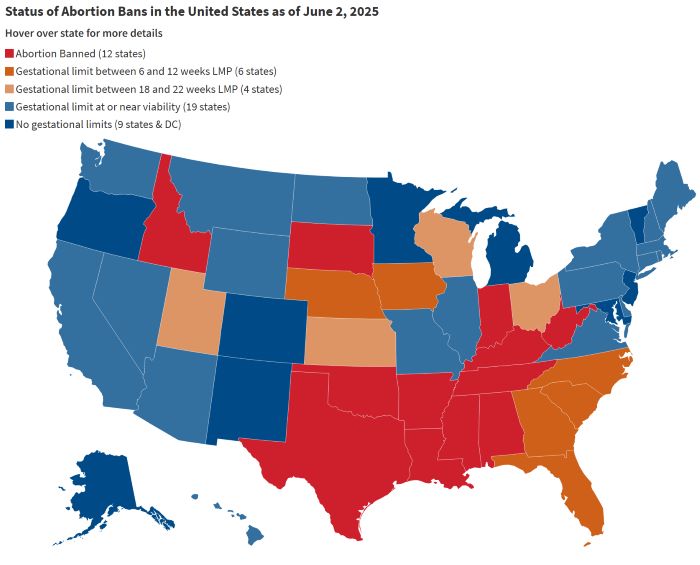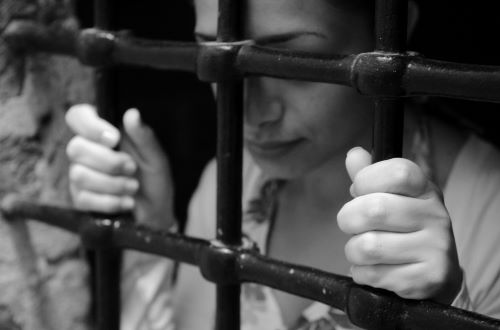

Reproductive rights are often reduced to slogans and court cases.

By Matthew A. McIntosh
Public Historian
Brewminate
Introduction
In the wake of Roe v. Wade’s reversal and the increasingly hostile landscape for reproductive rights in the United States, public discourse has once again collapsed into the binary of “pro-choice” versus “pro-life.” Yet behind this oversimplified divide lies a far more complex, nuanced, and frequently silenced conversation — one that speaks not just to abortion access but to the very conditions that define human autonomy, dignity, and justice.
When we speak of a “woman’s right to choose,” we often center the legal question: Can she obtain an abortion? But choice, real choice, requires far more than legality. It requires access. It requires agency. And it requires freedom from coercion — not just from the state, but from poverty, racism, trauma, and control. Below the surface of the national shouting match lie deeper truths, rarely given the space they deserve. To understand reproductive rights fully, we must bring those hidden realities into the light.
Economic Coercion: When “Choice” Is a Luxury
One of the most glaring omissions in mainstream reproductive rights discourse is the economic dimension of “choice.” While wealthier women often have the means to cross state lines or pay out of pocket for reproductive care, low-income women — disproportionately Black, Latina, Indigenous, and rural — face insurmountable barriers.
For these women, pregnancy is not always a choice but an economic compulsion. The cost of an abortion — averaging $500 to $1,000 in the first trimester — can be prohibitive, especially when coupled with lost wages, childcare costs, and travel expenses. Many clinics are now hundreds of miles away, and mandatory waiting periods or multiple visits can turn a simple procedure into an impossible logistical feat.
To speak of reproductive freedom without speaking of economic freedom is to ignore the millions who are effectively denied both. Without the means to choose, legality is a paper right.
Criminalizing Pregnancy: The Hidden Expansion of State Power

Another underexamined aspect is the creeping criminalization of pregnancy itself. In states where abortion is heavily restricted or banned, women who experience miscarriages or stillbirths can find themselves under investigation — and in some cases, arrested.
Pregnancy becomes a form of surveillance. Poor women, especially those of color, are disproportionately scrutinized for substance use, mental health issues, or “suspicious” loss of pregnancy. In Alabama, Oklahoma, and other states, prosecutors have pursued charges of “chemical endangerment” or “fetal homicide” in cases where no crime was committed — only a tragic and natural loss.
This is the quiet authoritarianism of the post-Roe era: a world where women’s biology becomes evidence, their grief a legal liability.
Forced Birth as Gender-Based Violence
Rarely do we speak of forced birth as what it truly is — a form of gender-based violence. When the state compels someone to carry a pregnancy to term against their will, it is engaging in bodily coercion. This is not theoretical. It is a profound violation of autonomy, with lifelong consequences: physical, psychological, economic, and relational.
Pregnancy can be dangerous. It alters the body, strains the organs, and increases the risk of long-term health complications. In the United States — where maternal mortality rates are the highest in the developed world, particularly for Black women — forcing someone to give birth is not merely an inconvenience. It can be a death sentence.
To frame forced birth as a neutral consequence of abortion bans is to erase the trauma of having one’s body conscripted by the state. It is time we call it what it is: violence.
The Trauma No One Talks About: Mental Health After Forced Pregnancy
Much is made of the alleged mental health consequences of abortion — a narrative that persists despite overwhelming evidence to the contrary. But the mental health outcomes of being denied an abortion are rarely discussed.
The Turnaway Study, a landmark project led by Dr. Diana Greene Foster, tracked women who were turned away from abortion clinics. The findings were unequivocal: women denied abortions experienced worse health, greater financial hardship, and lower life satisfaction than those who received care. They were more likely to remain in abusive relationships and more likely to suffer anxiety and depression.
These are not side effects. These are the predictable human consequences of coercion — and yet, they are almost entirely absent from public debate.
Reproductive Injustice in the Carceral System

One of the darkest, least visible battlegrounds for reproductive rights is inside jails and prisons. Incarcerated women — the fastest-growing demographic in the U.S. prison system — often have no access to abortion, contraception, or prenatal care.
Some are forced to give birth while shackled, a dehumanizing and dangerous practice still legal in several states. Others must file legal motions simply to be taken to a clinic. And when these women do give birth, they often lose custody — compounding trauma with separation and systemic violence.
Their stories are rarely told. But no conversation about the right to choose is complete without recognizing that bodily autonomy does not end at the prison gate.
The Erasure of Trans and Non-Binary People
Another silence haunts the mainstream conversation: the exclusion of trans men and non-binary individuals from the reproductive rights narrative. The phrase “women’s right to choose,” while historically powerful, can inadvertently reinforce a cisnormative framework that marginalizes those who do not identify as women but still need access to abortion and reproductive care.
Trans and non-binary people face staggering rates of healthcare discrimination, often being denied treatment or misgendered in clinical settings. Their reproductive autonomy is just as sacred, just as vulnerable — and must be included in any just movement for choice.
The Global Ripple Effect of U.S. Policy
While the conversation about reproductive rights is often U.S.-centric, American policy has global consequences. The Global Gag Rule — a policy that blocks U.S. funding to foreign NGOs that even mention abortion — has decimated reproductive health services around the world.
Under this rule (reinstated by every Republican president since Reagan), clinics that provide contraception, HIV care, and maternal health support have been shuttered — not because they perform abortions, but because they refuse to be silenced about them. The result: more unwanted pregnancies, more unsafe abortions, and more maternal deaths.
The fight for reproductive justice doesn’t end at the U.S. border. Our policies export their impact, often to the world’s most vulnerable populations.
Toward Reproductive Justice: A Holistic Vision
If we are to talk about choice honestly, we must expand our framework beyond legal access. The reproductive justice movement, born from the work of Black women like Loretta Ross and the SisterSong Collective, offers such a vision. It insists that the right to choose is not just the right to end a pregnancy, but the right:
- To have a child, or not to have a child
- To raise that child in a safe, sustainable environment
- To make those decisions free from violence, coercion, and constraint
This vision demands economic justice, racial justice, LGBTQ+ inclusion, and abolition of punitive control over bodies. It requires us to see reproductive freedom not as a medical issue alone, but as a human rights imperative.
Conclusion: Silence Is the Enemy of Freedom
In the mainstream narrative, reproductive rights are often reduced to slogans and court cases. But behind every policy, every law, and every vote lies a person — sometimes terrified, sometimes defiant, always deserving of autonomy.
If we are to defend the right to choose, we must tell the whole truth. Not just the legal battles, but the economic chains. Not just the clinics, but the prisons. Not just the cisgender women, but the trans and non-binary siblings. Not just the court rulings, but the grief, the rage, the trauma, and the strength.
Because the right to choose — when honestly understood — is nothing less than the right to live freely and fully in one’s own body. And that is not a right we can afford to abandon.
Originally published by Brewminate, 07.09.2025, under the terms of a Creative Commons Attribution-NonCommercial-NoDerivatives 4.0 International license.


